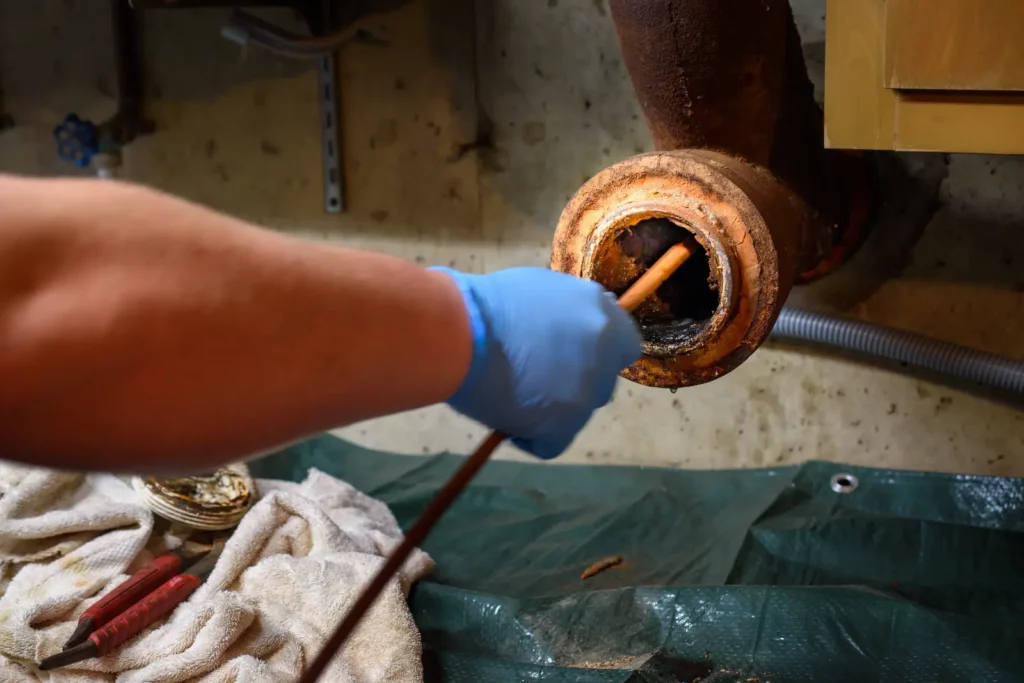Are you tired of taking icy showers? If so, it’s time to pay attention to your water heater.
Regular maintenance is essential to keep your water heater running smoothly and efficiently. From flushing the tank to adjusting the temperature settings, there are several key steps you can take to extend the lifespan of your water heater and avoid unexpected breakdowns.
So, grab a cup of coffee and join us as we explore the essential water heater maintenance tips that will help you keep the hot water flowing in your home.
Key Takeaways
- Regular maintenance is important for extending the lifespan of a water heater, reducing the risk of breakdowns, ensuring optimal performance, improving energy efficiency, and saving money on utility bills.
- Checking the pressure relief valve is crucial, including inspecting for leaks or corrosion, testing its functionality, flushing out debris, and replacing it if damaged or faulty.
- Draining and flushing the tank helps remove sediment buildup, prevents corrosion, improves heating efficiency, and increases the water heater’s lifespan.
- Inspecting and replacing the anode rod is important for protecting the tank from rusting and extending the water heater’s lifespan, and following the manufacturer’s guidelines for replacement intervals is recommended.
- Checking and adjusting temperature settings is necessary to ensure they are set to a safe level, for energy savings, and to prevent scalding accidents. Installing a programmable thermostat can also be considered.
- Cleaning and maintaining heating elements is crucial for optimal performance, including inspecting them for corrosion or buildup, periodically flushing the tank to remove sediment, and using a soft brush or cloth to clean the elements gently.
Regularly Flush the Water Heater Tank
To ensure optimal performance, regularly flush your water heater tank. This simple maintenance task is crucial for maintaining water pressure and preventing sediment buildup. By taking the time to flush your water heater tank, you can ensure that it continues to function efficiently and effectively.
Over time, sediment, minerals, and other debris can accumulate in your water heater tank. This buildup can’t only affect the efficiency of your water heater but also lead to a decrease in water pressure. Flushing the tank removes these sediments and allows the water heater to function at its best.
To flush your water heater tank, follow these simple steps. First, turn off the power supply to the water heater. This will prevent any accidents or injuries during the flushing process. Next, locate the drain valve at the bottom of the tank. Attach a hose and direct it to a drain or outside area where the water can safely flow. Open the drain valve and allow the water to flow out until it runs clear. This will indicate that all sediments have been flushed out.
It is recommended to flush your water heater tank at least once a year. However, if you notice a decrease in water pressure or if your water heater is making unusual noises, it may be necessary to flush it more frequently. Regularly flushing your water heater tank won’t only improve its performance but also extend its lifespan.
Inspect and Replace the Anode Rod
You should regularly inspect and replace the anode rod in your water heater to ensure its optimal performance. The anode rod is a crucial component that helps prevent corrosion and extends the lifespan of your water heater. Over time, the anode rod can become depleted and ineffective, allowing the tank to corrode. By inspecting and replacing the anode rod as needed, you can protect your water heater and ensure it continues to provide you with hot water for years to come.
To help you understand the importance of anode rod inspection and replacement, let’s take a look at a table that outlines the key details:
| Aspects to Consider | Anode Rod Inspection | Anode Rod Replacement |
|---|---|---|
| Frequency | Every 2-3 years | Every 5-6 years |
| Signs of Wear | Corrosion | Significantly worn |
| Materials Needed | Wrench | New anode rod |
| Steps | 1. Turn off power 2. Locate the rod 3. Check for signs of corrosion 4. Replace if worn | 1. Drain the tank 2. Remove the old rod 3. Install the new anode rod 4. Refill the tank with water |
| Benefits | 1. Prevents corrosion 2. Prolongs tank life | 1. Extends tank lifespan 2. Ensures optimal performance |
Check and Adjust the Temperature Settings
Inspecting and replacing the anode rod in your water heater helps protect it from corrosion and extends its lifespan, and now it’s time to move on to the next step: checking and adjusting the temperature settings.
Proper temperature control is crucial for both comfort and energy efficiency. Here are three essential tips for checking and adjusting the temperature settings of your water heater:
- Locate the temperature control panel: The temperature control panel is usually located on the front or side of the water heater. It may be covered by a small access panel that can be easily removed. Once you locate the panel, you can proceed to the next step.
- Set the temperature to the recommended level: The recommended temperature setting for most household water heaters is 120 degrees Fahrenheit (49 degrees Celsius). This temperature provides a comfortable and safe hot water supply while also promoting energy efficiency. Adjust the temperature control knob or dial to the recommended setting using a flathead screwdriver or your hand.
- Test the water temperature: Once you have adjusted the temperature settings, allow the water heater to run for a while. After about two hours, check the temperature of the hot water at a faucet using a reliable thermometer. If the water temperature is too hot or too cold, make further adjustments to the temperature control settings until you achieve the desired temperature.
Test the Pressure Relief Valve
Testing the pressure relief valve is an important step in maintaining the functionality and safety of your water heater. The pressure relief valve plays a crucial role in preventing excessive pressure buildup inside the tank, which can lead to serious damage or even explosions. By regularly testing the pressure relief valve, you can ensure that it’s functioning properly and providing you with the peace of mind you deserve.
Pressure relief valve troubleshooting is a straightforward process that you can perform on your own. Start by locating the valve on the side or the top of your water heater. It usually has a lever or a small handle. Carefully lift the lever to open the valve and allow some water to be released. You should hear a hissing sound as the pressure is being released. If no water comes out or if the valve is leaking, it may indicate a problem that needs to be addressed. In such cases, it’s essential to seek professional help to fix the issue promptly.
While you can perform basic pressure relief valve testing, it’s also crucial to understand the importance of professional valve testing. A certified technician can conduct a comprehensive inspection of the valve, ensuring that it’s in good condition and functioning correctly. They have the expertise and knowledge to identify any potential issues and make the necessary repairs or replacements. This professional service can help extend the lifespan of your water heater and prevent any accidents or malfunctions that may occur due to a faulty pressure relief valve.
Clean and Maintain the Heating Elements
To ensure optimal performance and longevity of your water heater, regular cleaning and maintenance of the heating elements is essential. The heating elements are responsible for heating the water in your tank, so keeping them clean and well-maintained is crucial for maintaining water heater efficiency.
Here are three important steps to follow when cleaning and maintaining the heating elements:
- Inspect the heating elements: Start by turning off the power supply to the water heater. Then, remove the access panel to gain access to the heating elements. Check for any signs of corrosion or buildup on the elements. If you notice any damage or deterioration, it may be necessary to replace the heating elements.
- Flush out the tank: Sediment buildup can affect the efficiency of your water heater. To prevent this, periodically flush out the tank. Attach a garden hose to the drain valve and let the water flow until it runs clear. This will help remove any sediment that has settled at the bottom of the tank and minimize the strain on the heating elements.
- Clean the heating elements: Once the tank is flushed, you can clean the heating elements. Use a soft brush or cloth to gently remove any debris or sediment that may have accumulated on the elements. Take care not to damage the elements during cleaning. After cleaning, reattach the access panel and restore power to the water heater.
Final Thoughts
Regular maintenance is crucial for the proper functioning and longevity of your water heater. By regularly flushing the tank, inspecting and replacing the anode rod, checking and adjusting temperature settings, testing the pressure relief valve, and cleaning the heating elements, you can ensure your water heater continues to provide hot water efficiently.
These simple maintenance tips will help prevent major issues and extend the lifespan of your water heater, saving you time and money in the long run.

